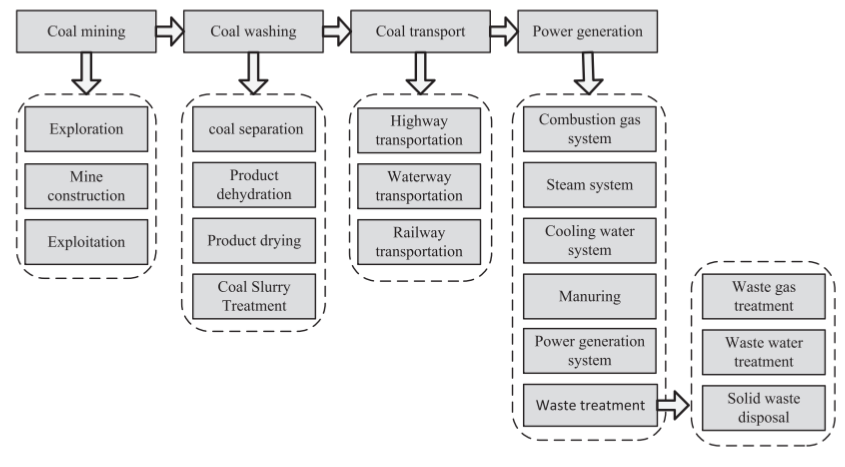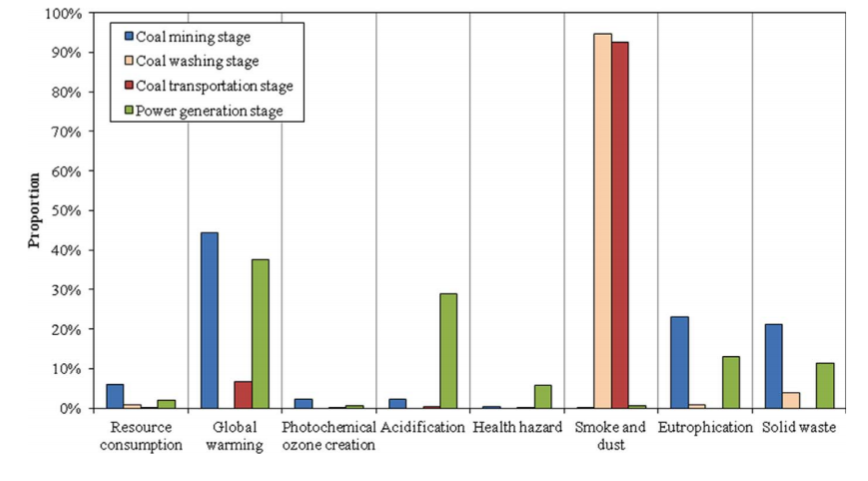Introduction
Coal power generation is one of the most used energy production types in the world. The process of energy generation using coal includes burning or combustion of solid coal in order to obtain power. The chemical composition of this natural resource includes “carbon and hydrocarbons, which have a high energy density that is released through combustion” (Gasparotto & Martinello, 2021, p. 113). Multiple coal-fired power plants are functioning in many countries that use this fossil fuel to generate electricity. In total, according to Gasparotto and Martinello (2021), “coal, the second most important energy source worldwide, contributes to 40% of global primary energy consumption” (p. 114). For example, China consumes and generates the most of coal-produced energy, with coal-fired plants’ generated power reaching 75% of the total energy produced in the country (Wang et al., 2018). Thus, coal is one of the leading energy sources, which has its advantages and disadvantages necessary to review to overview its future perspectives.
The benefits of coal production are several, and they are commonly associated with the economic perspective of the industry. Indeed, one of the benefits of coal power generation is the overall availability of coal as a fossil fuel. It is accessible and makes extraction and power generation easy. Another important benefit is the favorable and linearly-built infrastructure that allows the coal energy generation industry to strive (Wang et al., 2018). As shown in Figure 1, the life cycle of the coal power generation process is very detailed and well-structured, which allows for smooth global production and distribution of coal.

Another positive feature is the relatively low cost of energy production using coal compared to other fuel types.
On the side of the disadvantages associated with coal energy generation, the exhaustibility of this source of fuel is considered a negative feature. Indeed, since the natural resources of finite nature are harmful to the planet, their continuous consumption might have an irreversible impact on geological and climatic issues. In particular, the negative climate and environmental impact of coal energy have been reported to be substantial and difficult to overcome. In particular, as Figure 2 shows, coal at the power generating stage is one of the most contributive sources of global warming, resource consumption, solid waste, and eutrophication; it is the most hazardous in terms of acidification (Wang et al., 2018).

Importantly, coal energy’s negative impact on human health is one of the most significant considerations concerning the perspectives of the industry overall. According to Gasparotto and Martinello (2021), coal energy production generates large amounts of polluting substances, and “chronic exposure to pollutants in the air is associated with several diseases that can lead to death” (p. 114). Moreover, coal is a non-renewable energy source that is currently outpaced by renewable and green ones.
Future Outlook
The reviewed advantages and disadvantages of coal energy allow for outlining the future prospects of the industry. In particular, it is anticipated that the volumes of power generated by coal will gradually shorten. Coal and other non-renewable energy sources are likely to be substituted with more sustainable green technologies for power generation. Such trends are already noticeable in the global community, with fewer countries remaining largely depending on coal-fired plants. In essence, despite the accessibility, low cost, and well-developed infrastructure, coal’s environmental, geological, and health hazards will become decisive factors in reducing the volumes of coal energy in the future.
References
Gasparotto, J., & Martinello, K. D. B. (2021). Coal as an energy source and its impacts on human health. Energy Geoscience, 2(2), 113-120.
Wang, J., Wang, R., Zhu, Y., & Li, J. (2018). Life cycle assessment and environmental cost accounting of coal-fired power generation in China. Energy Policy, 115, 374-384.